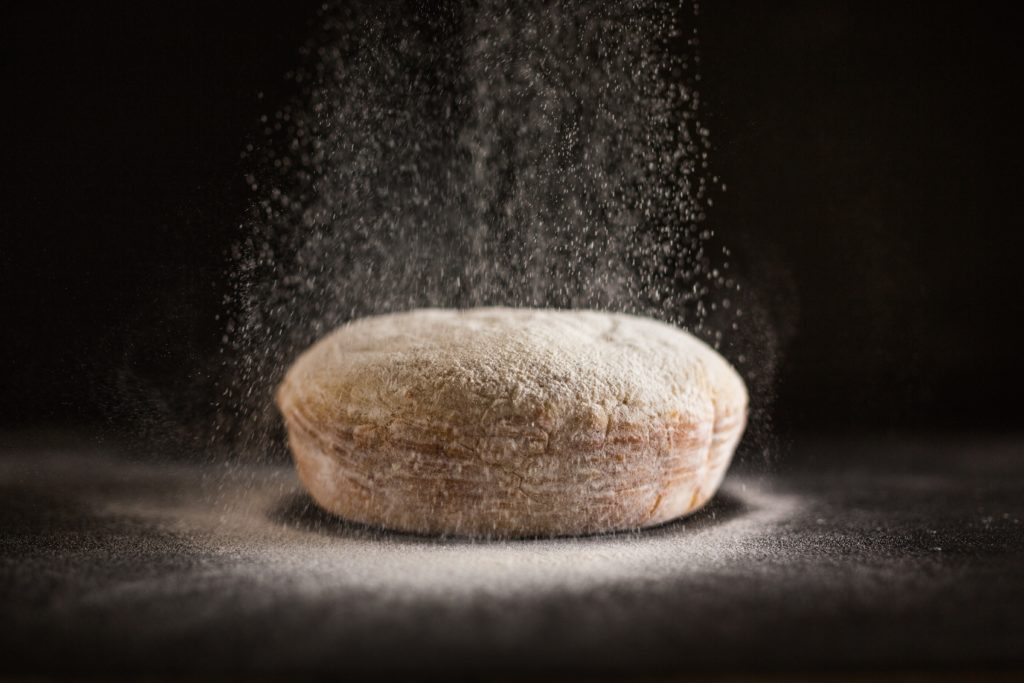All fields are required
Posted in E. coli,Our Blog on February 10, 2019

You probably already know the foods that are likely to give you food poisoning. Some things are just riskier to eat than others. The big offenders are pretty easy to name – leafy greens, sprouts, and undercooked eggs all spring to mind. These foods feature regularly on blogs like ours, on nightly newscasts, and in recalls and public health reports put out by government agencies like the FDA, FSIS, and CDC. Oysters, raw milk, and underprepared meats are also identified as food-poisoning culprits on a pretty regular basis. One food that you might not readily identify as a culprit behind food poisoning is raw flour.
Flour is dry, where bacteria and other microbes generally prefer foods that are wet. It’s not much processed and is usually cooked at high heat during the course of food preparation. When you’re instructed not to eat cookie dough before it’s gone into the oven, nobody really mentions flour — typically, the risk is identified as salmonella from uncooked eggs. Is flour really safe, however? Is it as innocuous as you’ve been lead to believe?
The answer may surprise you. I recently began baking bread in my free time. After I’d eaten a bit of raw dough, my partner asked me those same questions: is flour really safe to eat raw? Aren’t you worried that you’re going to get sick? I wasn’t worried, to be frank, and hadn’t thought much about flour as a potential source of contamination. Nonetheless, the question piqued my curiosity, so I set to googling.
I found that flour can indeed make you sick. Pathogens on the grains and vegetables that are ground to make flour can survive the process of milling and desiccation. And, as an article published in the New England Journal of Medicine late last year pointed out, it’s not just that flour can make you sick; it has made people sick, recently. Specifically, the article is about an outbreak of Shiga toxin producing E. coli (STEC) infections in late 2015 and early 2016 that were later linked back to flour.
That outbreak sickened some 56 people across 24 states. It was traced back to two kinds of E. coli, both of which produce shiga toxin. Genetic profiling of E. coli taken from several of the patients indicated that there was a high level of relatedness between the different strains of E. coli. That meant that the victims had likely fallen ill after consuming food from the same source.
Investigators set about administering questionnaires to those who had fallen ill. This step of the investigation typically involves a lot of questions about what the people had last eaten, which can help investigators to form a hypothesis about what foods were involved in the outbreak. They were puzzled, however, when data analysis of the questions that they’d asked yielded no likely candidate for the food poisoning. That meant that the cases could be linked by an unusual food, or by something else.
This led the people working the case to call the victims back up to conduct open-ended interviews about what they’d been eating leading up to the case. In the first round of questions, many people had indicated that they’d eaten leafy greens, but the CDC didn’t think that leafy greens were involved. Several of the people that they interviewed reported being avid bakers or having consumed baked goods in the window of time before they fell ill. Of the five who reported baking, 4 admitted to the common but dangerous sin of trying the dough while they were baking.
Three had also used a dough that’s identified in the paper as “brand A” – the large domestic manufacturer of flour who caused all the trouble in the first place. Two of those three still had brand A sitting around at their house, the same that they’d baked from a few days before, so investigators paid a visit to collect bacterial swabs from the different ingredients that had gone into the baked goods, including the flour.
Traceback investigations revealed that the flour collected from the two patients had been produced in the same facility. It was also the same flour that had sickened three more patients, all children, who ate raw dough at restaurants in the week before. The same flour was subsequently found in the houses of other patients who the national pathogen genetics database PULSE had registered as being part of the same outbreak.
This was a tricky case for investigators. Linking the contamination back to flour was difficult, as many different ingredients are involved in baking and the various investigative tools did not immediately bear fruit. The STEC was hard to separate from the flour at the testing stage, and the work of linking the different strains of E. coli genetically also proved to be difficult.
Still, there are some lessons to be taken from it. I’ll leave you with a quote from the article in the New England Journal of Medicine: “Since this outbreak resulted in the hospitalization of more than a quarter of case patients and in the development of the hemolytic–uremic syndrome in one, it serves as a reminder of the substantial health consequences of STEC infection … the behaviors of both consumers and retailers increased the risk of illnesses resulting from the contaminated flour. These behaviors included the consumption of raw or undercooked homemade dough or batter, which has long been discouraged because of the known risk of salmonellosis from consuming raw eggs, as well as allowing children to play with raw dough in restaurants and using flour to make play-dough for children at home. Our data show that although it is a low-moisture food, raw flour can be a vehicle for foodborne pathogens.
That’s the rub, folks. Don’t eat the batter or the dough, unless you want to chance getting sick.
By: Sean McNulty, Contributing Writer (Non-Lawyer)